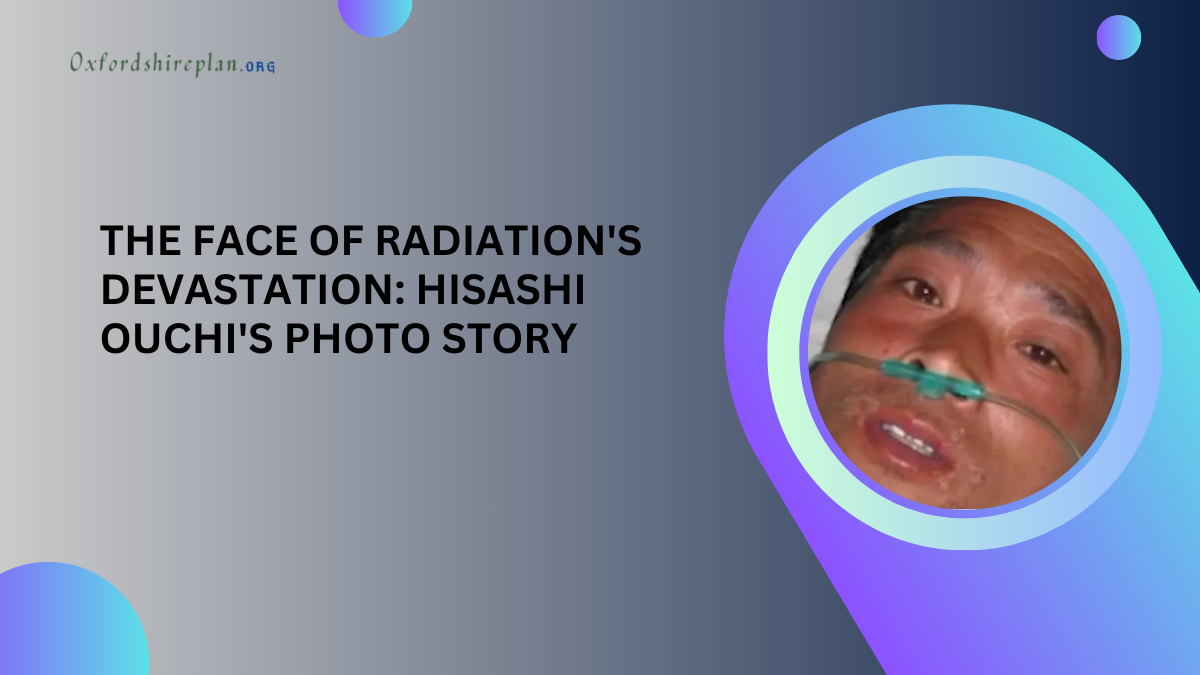In 1999, a disaster at the Tokai Mura nuclear plant in Japan exposed three people, including Hisashi Ouchi, to extreme radiation. The gruesome aftermath and Ouchi’s harrowing decline were documented in a series of disturbing photos, now infamous as the “Hisashi Ouchi Photos.” These images serve as a powerful warning about the nuclear industry’s risks and the devastating consequences of radiation exposure, leaving a lasting impression on all who see them.
This paper explores the devastating consequences of the accident, including Ouchi’s excruciating medical struggles and the ethical dilemmas surrounding his extended treatment. Furthermore, it investigates the far-reaching consequences of nuclear safety standards and emergency response protocols. By examining the history and impact of these haunting images, this article underscores their lasting impact on nuclear safety regulations and worker protection measures, a powerful reminder of the imperative need to prioritize safety in the nuclear industry.
Contents
A Cautionary Tale: The Hisashi Ouchi Photos and the 1999 Tokaimura Nuclear Accident
In 1999, a catastrophic nuclear accident occurred at the JCO fuel processing plant in Tokaimura, Japan, predating the Fukushima Daiichi disaster. This incident remains one of the most severe in nuclear history. On September 30, Hisashi Ouchi and two coworkers were processing enriched uranium when a critical error was made, deviating from established safety protocols.
The team’s manual addition of a bucket of uranium solution to a precipitation tank inadvertently triggered a nuclear fission reaction, leading to devastating consequences. This tragic event underscored the crucial importance of adhering to strict safety procedures in nuclear processing, a lesson that remains relevant today.
The Haunting Portrait of Hisashi Ouchi: A Powerful Symbol of Nuclear Devastation
The images depicting the severe radiation injuries sustained by Hisashi Ouchi, a Japanese technician at the Tokaimura nuclear plant, are undeniably disturbing and have sparked intense controversy. Following a critical radiation exposure in the 1999 plant accident, Ouchi suffered profound physical harm, graphically illustrated in the images.
These haunting visuals serve as a stark reminder of the devastating impact of radiation on the human body, highlighting the dire consequences of such exposure. The explicit nature of these images has fueled heated debates within the scientific and medical communities, weighing the educational value of such visual aids against the ethical concerns of publishing sensitive and distressing material.
While ethical questions surrounding the publication of these images remain, the public’s awareness of Hisashi Ouchi’s disabilities has undeniably enhanced our understanding of radiation sickness and its severe, long-term effects on human health. The images have become a powerful tool in raising awareness about the dangers of radiation exposure, prompting crucial discussions and heightened vigilance in the pursuit of nuclear safety.
Also Read about: Unblocked Games 6X
The significance of Hisashi Ouchi’s radiation injuries and the controversial images associated with them are highlighted by the following key issues:
- Ouchi’s tragic experience has significant ramifications for radiation safety protocols, highlighting the imperative for strengthened safeguards and more robust protective measures to prevent similar incidents in the future.
- The circulation and availability of graphic medical images like Ouchi’s raise significant ethical concerns and spark crucial discussions about their use and impact.
- These images serve as a powerful tool for educating the public about the risks of radiation exposure, and they play a crucial role in advocating for enhanced safety measures and more robust protocols to mitigate these risks.
- Those seeking a visual representation of Hisashi Ouchi’s condition can refer to a concise PHP table, which graphically illustrates the severe physical effects of radiation poisoning and highlights the urgent need for prompt medical intervention in such cases.
These points underscore the importance of Ouchi’s case in promoting radiation safety and awareness while also acknowledging the ethical considerations surrounding using graphic images in this context.
The Tragic Fate of Hisashi Ouchi: A Life-Altering Exposure to Radiation
Following the factory’s devastating accident, Hisashi Ouchi and his colleagues were urgently transported to the Chiba National Institute of Radiological Sciences, triggering an immediate evacuation. Due to their proximity to the nuclear fuel, each individual suffered severe radiation exposure, with Ouchi, who was closest to the source, receiving a record-breaking 17 sieverts – the highest level of radiation exposure ever recorded, marking a sombre milestone in nuclear history.
Upon admission, Hisashi Ouchi was in excruciating pain, struggling with laboured breathing, severe vomiting, and recurring loss of consciousness. His eyes showed signs of bleeding, and his body had suffered severe radiation burns. His critically low white blood cell count and non-existent immune response gravely concerned the medical team.
To prevent infections, Ouchi was placed in isolation in a specialized room, where doctors assessed the extensive internal damage, revealing the catastrophic consequences of his radiation exposure.
Ouchi was transferred to a state-of-the-art hospital renowned for its innovative stem cell research three days later. During his initial week in intensive care, he underwent multiple skin grafts and blood transfusions. Dr. Hisamura Hirai, a pioneering expert, proposed a groundbreaking approach: stem cell transplants as an alternative to traditional bone marrow transplants.
Ouchi’s sister selflessly donated her stem cells, and the initial outcomes seemed promising. However, further chromosomal analysis yielded disheartening results: the extreme radiation had irreparably damaged the newly transplanted cells, rendering the treatment ineffective.
Despite heroic efforts, Ouchi’s DNA failed to regenerate even with skin grafts. Consumed by despair, he pleaded, “I can’t take it anymore. I am not a guinea pig.” Yet, his family persisted in exploring experimental treatments, which only worsened his condition, causing his skin to deteriorate further. On his 59th day in the hospital, Ouchi suffered a heart attack, was resuscitated, and endured three more cardiac arrests within a heartbreaking hour.
His condition had become irreversible, with severely damaged DNA and cumulative brain damage from repeated cardiac arrests. Finally, on December 21, 1999, a fatal heart attack triggered by multi-organ failure brought an end to his unbearable suffering, marking a tragic conclusion to his 83-day battle.
The Long Road to Recovery: Tokaimura’s Nuclear Disaster Aftermath
In the aftermath of the Tokaimura nuclear accident, a state of emergency was declared, prompting a 24-hour lockdown for approximately 310,000 residents living within a six-mile radius of the Tokai plant. In the subsequent ten days, around 10,000 individuals underwent radiation exposure screening, revealing that over 600 had been exposed to low radiation levels, necessitating further monitoring and treatment.
Both Hisashi Ouchi and Masato Shinohara were among the most severely affected individuals, with Shinohara undergoing a pioneering seven-month treatment program similar to Ouchi’s. This innovative approach involved receiving blood stem cell transfusions from a newborn’s umbilical cord, a revolutionary technique to repair damaged tissue.
Unfortunately, despite these cutting-edge efforts, Shinohara succumbed to complications from failure of lung and liver on April 27, 2000, marking a tragic outcome in the quest to save his life.
Yutaka Yokokawa, who suffered mild radiation sickness, made a full recovery within three months but faced legal consequences for alleged negligence. Meanwhile, JCO, the company responsible for the accident, paid out $121 million in settlements to resolve numerous compensation claims related to the disaster.
After a decade of operating under new management, the Tokai Nuclear Power Station was suddenly mothballed in 2011. The devastating Tōhoku earthquake and tsunami triggered the facility’s automatic shutdown system, halting all operations abruptly. Since then, the plant has remained dormant, its operations suspended indefinitely, and there are no clear prospects for restarting.
Click Here to Read More

Jonathan is an avid automobile enthusiast who is passionate about all things on wheels. From the latest car models to classic vintage rides, I love exploring the automotive world’s intricate details and engineering marvels. With years of experience in test-driving, reviewing, and analyzing cars, I provide readers with comprehensive insights and honest opinions.
















